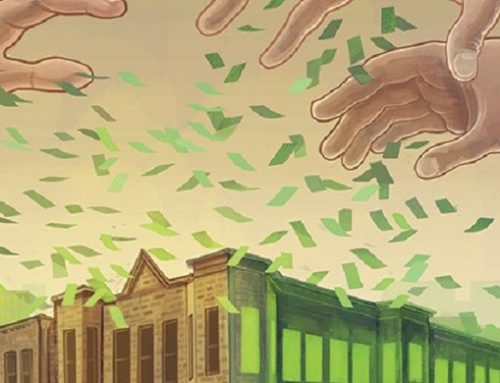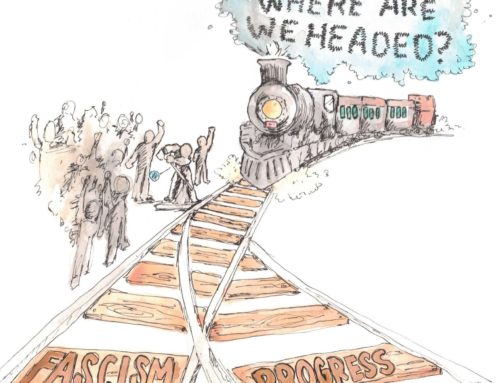Issued by One Struggle, September 2011
Mass movements can not be conjured from thin air or willed into being, no matter how correct our ideas or determined our hearts. They arise in response to intolerable social problems, congeal through collective practice and theoretical work, and harden through continuous, escalating struggle.
In the U.S., as in many parts of the world, the 1960s saw the birth of a radical mass movement with revolutionary currents running through it. It didn’t burst onto the scene fully formed, but developed through twists and turns, suffering painful lessons, betrayals, mistakes and defeats on the way. It also celebrated victories which, like waves pushed by storm winds, grew ever larger and more powerful until the idea of revolution rose in the public consciousness as a tangible possibility.
As the movement found its footing, participants became skilled in tactics and honed their strategies. Small and vague collectives coalesced and matured into national, multi-level, unified fighting machines.
When the Vietnam War ended, the sense of personal urgency dissipated for many in the US. The declining waves of struggle ultimately beat themselves out on the barren shore of the 1980s bubble economy. The pretense of growth based on debt was enough to bribe much of the population into passivity. The loss of socialism in China and the collapse of the Soviet Union (which, their own natures aside, had acted as counterweights to U.S. hegemony) broke the spirits of most of the rest.
Today the global system faces a convergence of crises, but this time there is no economic growth (real or pretend) on the horizon. The system shows no viable possibilities for a future. Capitalism is played out.
Yet the ruling class hangs onto power, squeezing the last bits of profit out of us and the natural world, not hesitating to kill us in the process. If we’re to save ourselves and the planet, we must eliminate the capitalist/imperialist system once and for all.
Opposing the system can, and does, take many forms. Many types of organizations are arising and will arise, with different visions of the future and different strategies on getting there. Some will contribute positively to the overall project; others will commit errors of varying degrees of severity. Diversity in our approaches and ideas is our strength, and mutual respect and non-sectarianism will help us learn from one another, and advance hand-in-hand.
Together, each contributing in our own way, and in tandem with our independent work, we can build a movement strong enough to accomplish the one essential task we all share: to end capitalism/imperialism.
We need to build organizations to magnify our power
Organizations are structured relationships between people who understand that collective power can affect society on a level that atomized individuals can not. Organizations begin with two people and a plan, and go through a process of development as surely as we all go through the stages of infancy, youth and maturity. As the system cracks apart, it intensifies the suffering of all of us living inside the thrashings of its final stage. In response to this new level of urgency to find a way out and create alternatives, people are exploring many possible courses of action. Small, loosely defined collectives are springing up all over.
How will they coalesce into a combative mass movement capable of sweeping away the entire system of global capitalism?
We’re still at the initial stage of the current round of systemic crisis-and-response, attempting to come into being as a social force. Since a mass movement can not spring whole into existence, but will instead be forged through practice we have yet to perform, we should organize on a basis corresponding to our current situation and the measure of our forces. To lay the groundwork for a mass movement, we can start with a preliminary type of organization: the Intermediate Level. [1]
The intermediate level organization is a tool with which we can build a mass movement. It can create more favorable conditions for mass struggle, and be in place when mass struggle does erupt, to maximize its effectiveness and provide continuity through its inevitable ebbs and flows.
The intermediate level organization is neither a revolutionary organization nor a mass organization, but has characteristics distinct from both. As its name implies, it operates between the two, structurally and ideologically, and links them. Because it isn’t well-defined in popular consciousness, it is often confused with one or the other level.
These categories, defined by levels of consciousness and commitment, are not rigid, and a group can blend them or change from one to another according to circumstances. Their relationship is dialectical, each level acting upon and influencing the others. Their boundaries are permeable, with individuals able to move from one level to another, or to operate in more than one at a time. Some of their elements differ only in degree or emphasis. The levels are generally characterized as follows:
Revolutionary organization
* A high level of theoretical, ideological and political unity
* A common long-term goal, a comprehensive strategy, and a detailed plan to implement that strategy
* Continuously developing methods of work, and systematic summation of that work
* A process, honed through practice, of collectively shaping ideas, direction and policies
* A membership of cadre who have dedicated their lives to the struggle
* A structure that is configured to withstand repression
Mass organization
* Unity based on common interests to achieve a specific goal (such as a union fighting for higher wages, or a coalition to stop a war)
* Ideologically and politically broad, often vague or populist
* A simple goal and/or strategy, usually limited to one issue, often short-term
* Membership requirements are loose, and expectations are not strict
* A basically open structure—anyone can join
Intermediate organization
* A level of unity that defines and opposes the system as a whole, yet refrains from defining a specific strategy for eliminating it (thus is able to embrace members with various theories)
* A goal of uniting all who can be united for a medium-range goal (the precise content of which is not fixed, but dependent upon historical circumstances and the changing level of class consciousness among the masses—for example, it could currently be to defeat global capitalism) without attempting to unify on long-term goals (such as the precise form of a future society)
* Collectivity in developing common plans and tactics for achieving the medium-range goal
* Non-sectarian and mutually supportive
* Continuously improve methods and practice through collective summation
* A membership with some level of accountability and commitment beyond “weekend warrior”
* A semi-open or invitation-only (but not clandestine) structure
The revolutionary level is principle
The revolutionary level is indispensible and ultimately determinate—without its presence, the other two tend to lose themselves in the murky dead ends of spontaneity, such as reformism and economism. This does not mean that the intermediate level is a front group for revolutionaries—care must be taken to avoid inadvertently forming a top-down bureaucratic structure. Each level must function autonomously and to its own fullest potential.
The intermediate level addresses limitations of the other levels
The revolutionary organization and the mass organization each faces specific obstacles during periods of low struggle, such as that from which we are currently emerging.
* Revolutionary organizations strain to connect with masses who are largely unreceptive. While the global system is still intact and appears strong, it’s difficult for people to imagine that the alternatives presented by revolutionaries are possible to implement. Revolutionary organizations, as they struggle to retain their declining membership and their political identity during unfavorable periods, can either become rigid and dogmatic (increasing their isolation), or they can water themselves down in an effort to be more appealing, and be absorbed into the dominant political structure.
* Mass organizations are, under this system, usually dominated by institutionalized bureaucracies (i.e.: unions and NGOs) whose very functions are to divert the discontent of the masses into themselves and into compromise with capital. Many of them are funded by capitalist entities, turning political organizing into jobs involving social work or charity, and the organized into passive recipients of assistance. The non-funded ones tend to lack continuity: they are able to mobilize people for brief spurts but then lose support as issues fade. Mass organizations, by providing no analysis of the systemic nature of problems, are unable to break the system’s ideological hegemony. Currently they are hobbled by a lack of class consciousness and swamped by liberalism and reformism.
An intermediate level organization addresses these obstacles from both directions, and prepares militants to potentially work in all levels. It has two basic functions:
* to build a combative, continuously advancing mass movement that unites all who can be united to fight against the system
* to locate and train radicals who might also organize at the revolutionary level [2]
Organizing explicitly at the intermediate level can prevent the problems that occur when a group calling itself either a revolutionary or a mass organization is, in reality, mushing the levels together. Though the intermediate level organization is not widely understood, it is widely practiced (usually unknowingly). If a group proclaims to be revolutionary but hasn’t yet achieved the degree of unity and commitment that revolutionary practice requires, then it is in fact an intermediary organization. If a group is attempting to build a mass organization but doesn’t yet have a mass base, then it is in fact an intermediate level organization.
Confusion about levels leads to problems. For example, if revolutionary-minded people are working in an intermediate level organization but treat it as revolutionary, they tend to push for a higher level of unity than is appropriate, and don’t fully value or take into account the ideological diversity that is present. There lies the danger of replacing genuine unity with pressure to conform. Revolutionaries can, if not careful, end up dominating an intermediate level group, preventing the less experienced people from developing their skills and knowledge, and blocking the free flow and exchange of new ideas.
Often those who do mass organizing are, in reality, also intermediate level organizers who are generating temporary mass mobilizations rather than the movements they are aiming for. With their higher levels of commitment and medium-range (as opposed to short-term) goals, intermediate level organizations can remain in existence through the ebb and flow of mass struggles. They can provide continuity during dry periods, and continuously work to bring people into motion. Their goal should be to constantly draw in new people to replace themselves as organizers at the mass level.
If intermediate level people work within mass organizations but treat them as intermediate, they also can make the mistake of pushing for a higher level of unity than is appropriate for that particular work. Instead they can (and should) work autonomously within mass struggles as an intermediate tendency, representing their own distinct political level within the mass movement. In this way they can avoid being swamped by the liberalism and reformism characteristic of today’s mass organizations.
Organizations advance in an ongoing process
As the system goes deeper into crisis, as its cracks widen and struggle erupts in society, people become increasingly radicalized. Mass organizations become more robust and more explicitly political—in effect, they become the intermediate level. As this occurs, the intermediate level gives way to them and dissolves into them. New intermediate levels then form at yet higher levels, in a continuous process that, like a conveyor belt, pulls people in the direction of revolutionary consciousness and organizational forms.
At the same time, revolutionary organizations also advance, working toward more refined bases of theoretical, ideological and political unity. As events escalate, and as organizations ever more effectively express and embody the demands of the increasingly class-conscious masses, these organizations can grow and coalesce into a powerful social force capable of leading fundamental social transformation.
Events are moving rapidly, and we need to be out there, everywhere, collectively sparking and fanning the mass struggles that are necessary to end the nightmare of global capitalism. We need as many people as possible to be prepared and able to quickly respond when mass struggle does erupt (which will likely be sudden and surprising). We need to forge strong, competent organizations and movements that can not be shaken, derailed or pacified. We can contribute to this process now by building organizations at the intermediate level.
Notes:
[1] The concept was implemented in 1979 by the Workers Committee of Rockland County (NY), as well as by a group of Haitian revolutionaries to build a mass movement based among workers and peasants during the fall of Duvalier. More recently, it has been articulated in a paper “The Intermediate Level Analysis,” by S. Nappalos for Miami Autonomy and Solidarity (posted on 11/24/11 at: http://miamiautonomyandsolidarity.wordpress.com/2010/11/24/the-intermediate-level-analysis/). The South Florida group One Struggle was initiated on the basis of the intermediate level concept in 2010.
[2] For our present purposes, this term is general and applies to any organization with a long-term goal of social transformation, whether this involves insurrection, overthrow, dismantling, seizing, smashing, or any other type of activity that results in a fundamental shift in power relations.






[…] can read more about organizing at the intermediate level, here. Or, give us a shout if you’d like OS to come discuss organizing at the intermediate level with […]
[…] The Intermediate Level […]